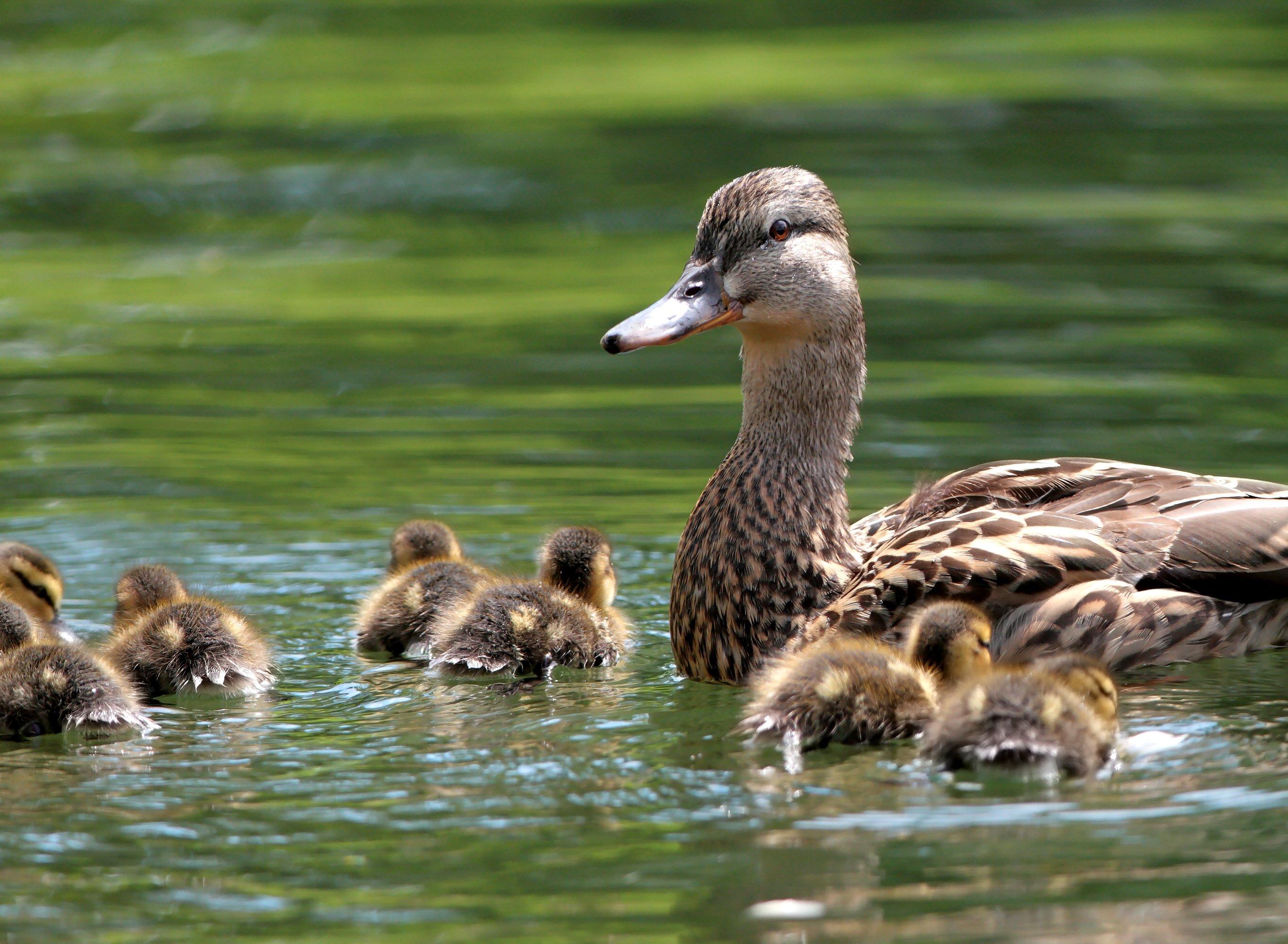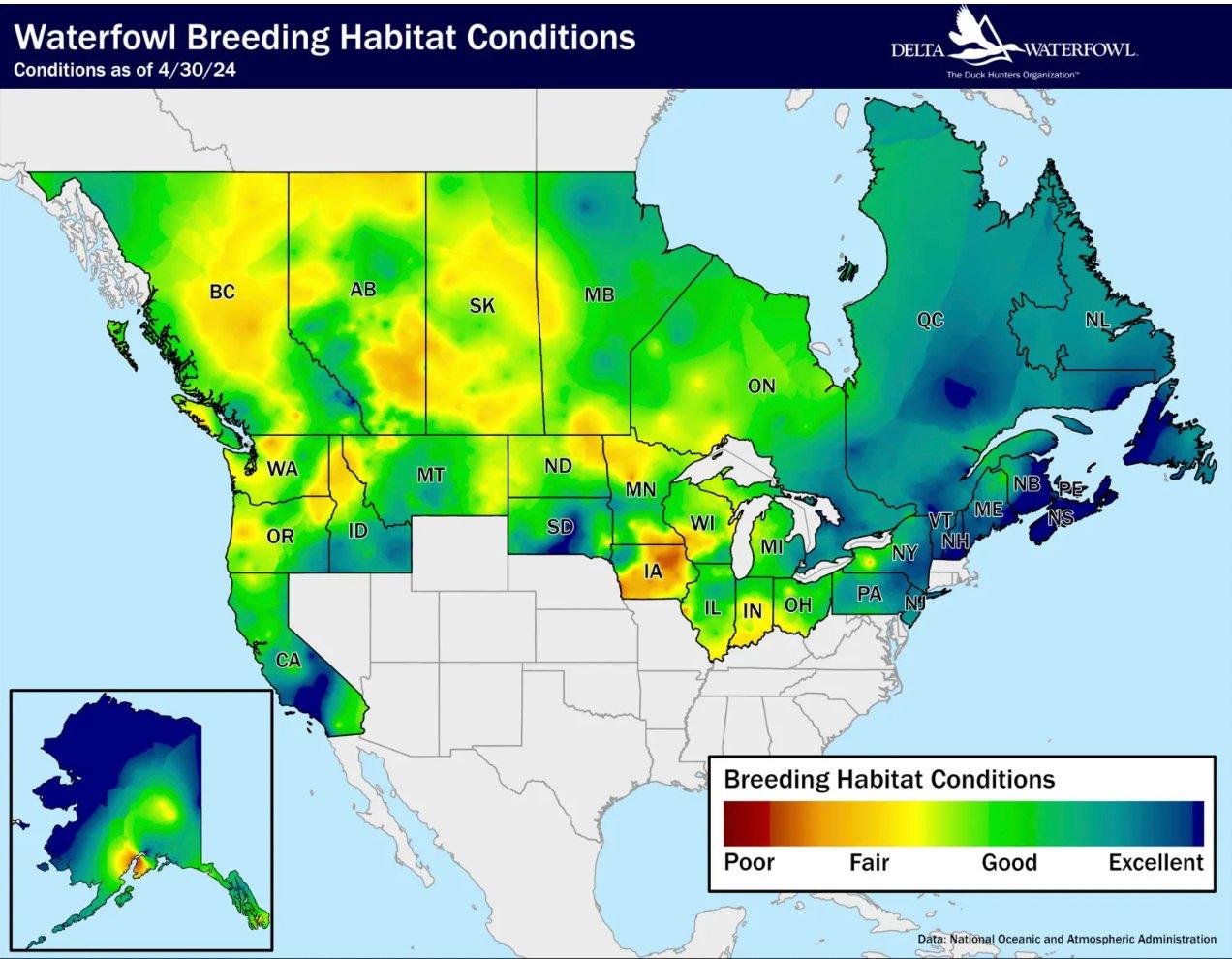Biologists hope timely spring rains will boost wetlands and help the fall flight

Young birds comprise most of the fall harvest, so spring breeding habitat conditions are critical to the upcoming season. Photo courtesy of Delta Waterfowl
Just ahead of the nesting and brood rearing periods, waterfowl breeding habitat conditions look spotty at critical production areas, although some pockets appear promising.
Delta Waterfowl’s April 30 breeding habitat report, written by Mike Buxton, said much of the Canadian prairies and parklands are drier than average. However, portions of the Prairie Pothole Region in the United States offer hope.
“The crucial eastern Dakotas are expected to help compensate for potentially low production elsewhere,” the report said. “Reports from Delta’s predator management trappers in the eastern Dakotas indicate decent and steadily improving conditions. Rains in late April and early May put additional shallow duck-producing wetlands on the landscape. In fact, some isolated flooding events occurred in South Dakota.”
Don’t Miss: Waterfowl Migrations are Changing. Here’s What That Means for Hunters
That precipitation also helped conditions in Manitoba, where portions of the central and southeastern regions are in good to excellent shape. Saskatchewan received more winter precipitation than it had during recent years, which have been very dry. However, the province needs more moisture to attain average breeding conditions. Meanwhile, Alberta remains in a more severe drought-induced water deficit.
The report said the Great Lakes region looks relatively promising, especially on the Canadian side. However, large areas are still experiencing drought, including western Michigan, Iowa, and southern Minnesota.

Waterfowl breeding habitat varies from being fair to excellent in the Dakotas to relatively dry through much of Alberta and Saskatchewan. Photo courtesy of Delta Waterfowl
In the Atlantic Flyway, conditions look good to excellent throughout most of the eastern survey area, which is promising for eastern mallards and black ducks. In the Pacific Flyway, California is in fantastic shape. Further, Alaska’s river deltas, including the critical Yukon region, are in excellent condition for pintails and other breeding ducks.
And as the report noted, timely spring rains could still improve conditions for ducks.
“Fortunately, there’s still time,” the report said: “Hopefully, the recent consistent precipitation continues to improve conditions in the Prairie Pothole Region.”
Good duck production is a critical factor for fall waterfowl seasons, as young birds typically comprise most of the harvest. The U.S. Fish and Wildlife Service and Canadian Wildlife Service will soon gauge habitat conditions in Prairie-Parkland Canada and other regions during the annual breeding population survey, which covers about 2 million square miles across North America. Results are typically released in August.
Don’t Miss: Is Duck Hunting Really in Decline?












